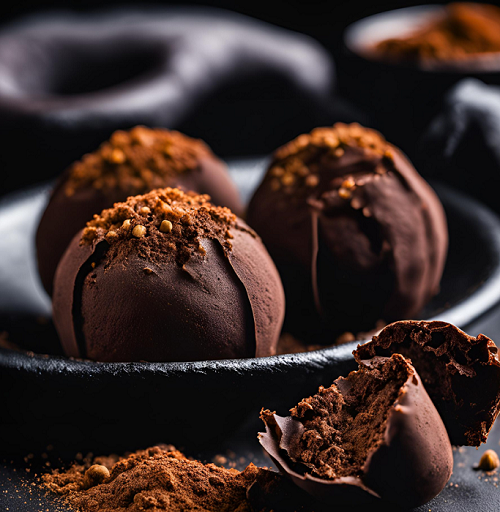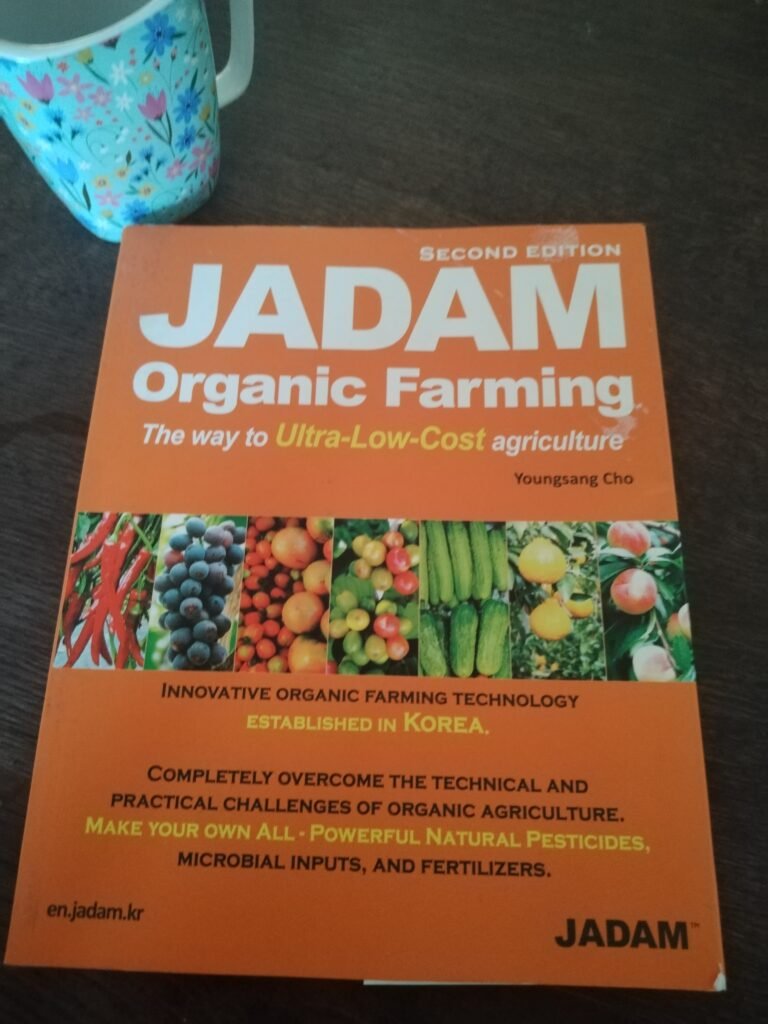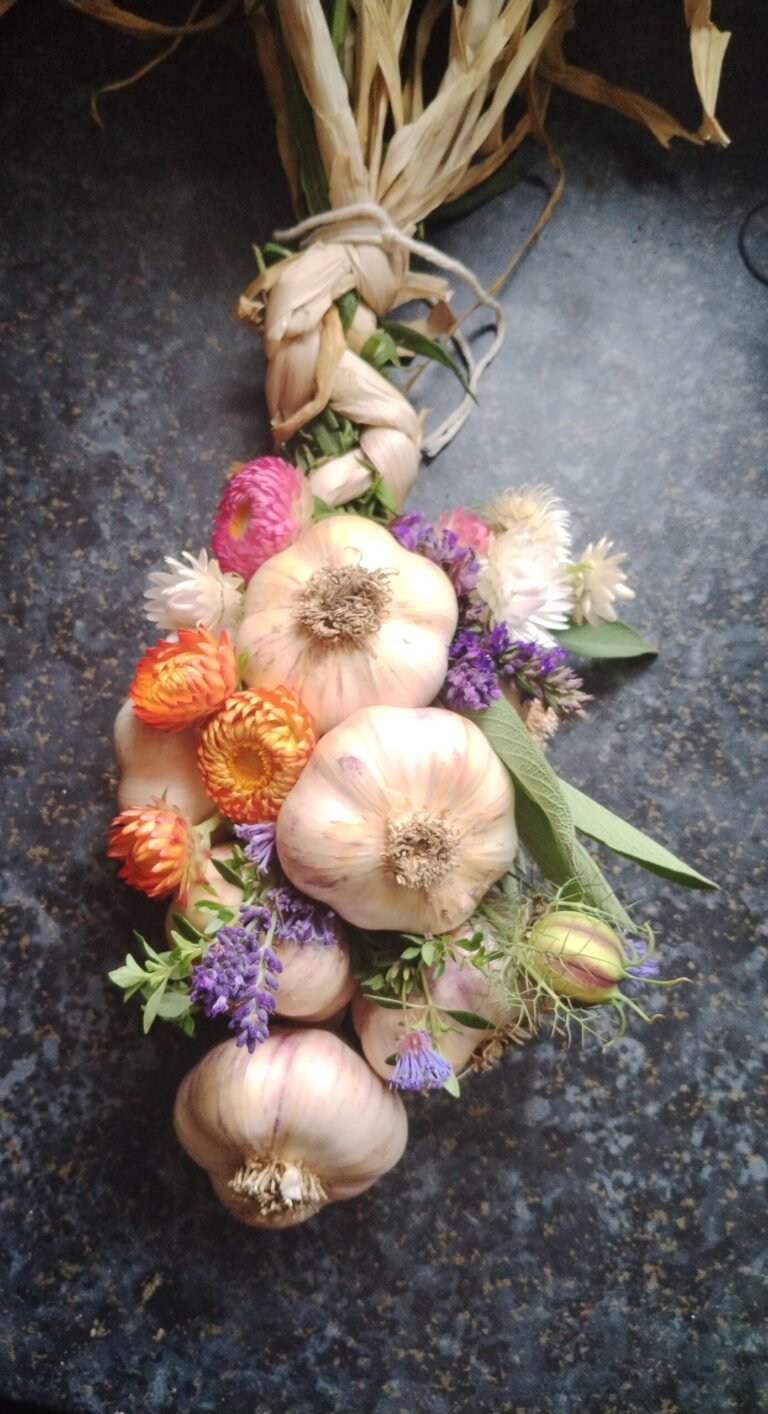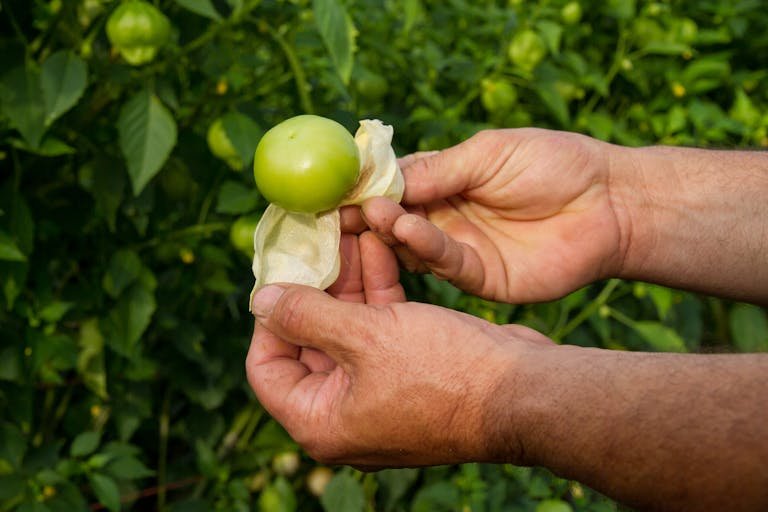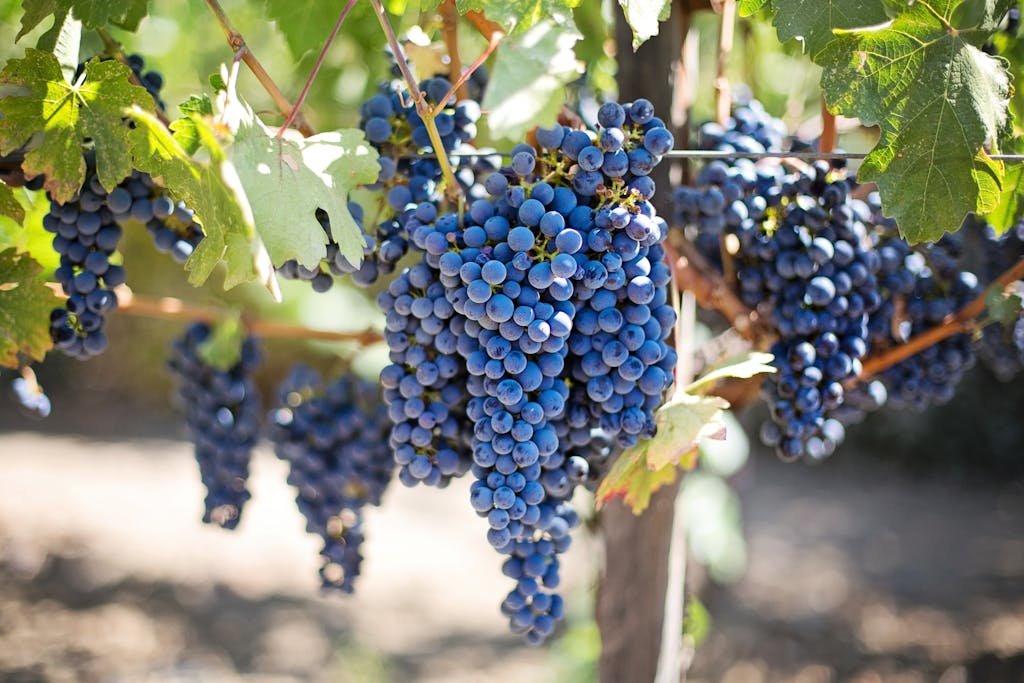
How to grow grapes in cold climates might sound like an impossible dream, but with the right varieties and a few smart techniques, you can turn even a chilly backyard into a thriving vineyard. If you’ve ever hesitated to grow your own grapes because of late frosts, short summers, or unpredictable weather, you’re not alone. But here’s the good news—grapes are far tougher than they seem, and with a little planning, they’ll reward you with an abundance of sweet, juicy fruit.
More and more gardeners are embracing homegrown fruit, not just for the flavor, but for the control it gives us over what we eat. With concerns about pesticide residue on store-bought fruit (looking at you, Dirty Dozen 🍏), growing your own means fewer chemicals, better taste, and a much lower carbon footprint. (Need more inspiration? Check out my guide on how to grow the Dirty Dozen at home!)
Whether you dream of fresh table grapes, homemade juice, or even a small-batch wine from your backyard, this guide will walk you through everything—from choosing the best cold-hardy varieties to protecting your vines through winter. Let’s dig in!
Some of the links in this post are affiliate links, including links to products on Amazon. This means if you click and make a purchase, I may earn a small commission at no extra cost to you. I only recommend items I genuinely love and believe could add value to your life. Thank you for supporting this blog—it helps keep the content free and full of ideas just for you!
Best Cold-Hardy Table Grape Varieties
Not all grapes need a Mediterranean holiday to thrive—some are quite happy braving Irish weather with its mild summers and damp autumns. If you want to pluck sweet, juicy grapes straight from the vine, you’ll need varieties that ripen early, resist disease, and can handle cooler temperatures.
For fresh eating, Phoenix is a fantastic choice with its muscat-like sweetness and good mildew resistance.
Rondo, often grown for wine, also works well as a table grape thanks to its deep colour and bold flavour. If you prefer seedless varieties, Lakemont and Himrod offer delicate, honeyed sweetness. And for a classic seeded grape with exceptional hardiness?
Boskoop Glory is a winner, ripening reliably in Irish gardens.
While many grapes can be coaxed into growing here, choosing the right variety is half the battle. Pick wisely, and you’ll be enjoying homegrown grapes while others are still reaching for supermarket punnets!
Seedless vs. Seeded Grapes: Which is Best for Home Growing?
It’s the age-old debate—seedless grapes are convenient, but seeded grapes often win on flavour and resilience. So which should you plant?
Seedless grapes like Lakemont and Himrod are a joy to eat straight from the vine. They tend to be milder in flavour, making them great for kids’ lunchboxes or fresh snacking. However, seedless varieties can be slightly fussier to grow, sometimes needing extra care with pruning and protection from mildew.
On the other hand, seeded grapes—especially heritage varieties like Muscat Bleu or Boskoop Glory—often develop deeper, richer flavours. They’re typically hardier and more disease-resistant, making them a better choice for organic, no-fuss gardening. Yes, you’ll have to deal with seeds, but if you don’t mind a little crunch, the flavour is absolutely worth it.
At the end of the day, it all comes down to preference—sweet and convenient or bold and traditional? If space allows, why not grow both and enjoy the best of both worlds?
Choosing Grapes for an Irish Climate
Forget USDA hardiness zones—Irish grape growing is all about mild, damp springs, cool summers, and occasional autumn frosts. While some varieties struggle with our shorter growing season, others thrive when given a south-facing wall, a sheltered spot, or the luxury of a polytunnel.
When picking grapes for Ireland, early ripening is key. Look for varieties that are ready by late summer or early autumn before damp weather sets in. Good mildew resistance is also a must, as humid conditions can encourage fungal issues. Hardy varieties like Phoenix, Rondo, and Solaris do well outdoors, while more delicate seedless types like Lakemont benefit from polytunnel protection.
Whether you grow them in a tunnel, up a warm stone wall, or even in a large container, grapes can absolutely thrive in Ireland. With the right variety and a bit of care, you’ll be harvesting sweet, homegrown fruit—no plane ticket to Bordeaux required!
Choosing the Perfect Spot for Your Grape Vines
Even the hardiest grapevines won’t thrive if they’re stuck in a cold, soggy corner of the garden. Grapes are sun lovers at heart, so location is everything when it comes to growing sweet, flavorful fruit in a cooler climate like Ireland.
Why South-Facing Walls and Fences Create Microclimates
If you have a south-facing wall, fence, or even a sturdy trellis, you already have one of the best grape-growing spots! These structures trap heat during the day and release it slowly at night, creating a mini Mediterranean microclimate—perfect for ripening fruit faster. Plus, they provide shelter from wind and rain, which is especially handy in unpredictable Irish weather. If you’re limited on space, try growing vines fan-trained against a warm wall to maximize sunshine exposure.
How to Use Slopes and Raised Beds for Better Drainage and Warmth
Grapevines hate sitting in soggy soil, so if your garden tends to hold water, consider planting on a gentle slope or in raised beds. Slopes help drain excess water, preventing root rot, while raised beds warm up faster in spring, giving your vines a head start on the growing season. If you don’t have a natural slope, a well-prepared raised bed with gravel or sand mixed in can work just as well.
The Importance of Full Sun for Sweet, Flavorful Grapes
No shortcuts here—grapes need full sun to develop their best flavour! A spot with at least 6–8 hours of direct sunlight per day is ideal. The more sun your vines soak up, the sweeter and juicier your harvest will be. In shadier gardens, you can still grow grapes, but they may ripen more slowly or have a tangier taste. If needed, consider pruning nearby trees or choosing early-ripening varieties to compensate for less sun.
With the right spot, your grapevines will flourish, rewarding you with homegrown fruit that’s leagues better than anything wrapped in supermarket plastic!
Preparing the Soil for Healthy Grape Growth
Before you even think about planting, let’s talk soil—because healthy vines start from the ground up! Grapevines are tough, but they won’t forgive poor drainage or nutrient-poor soil. With the right foundation, you’ll set your plants up for strong growth, disease resistance, and incredibly sweet fruit.
Testing Soil pH and Improving Drainage
Grapevines are fussy about pH—they thrive in slightly acidic to neutral soil (around 6.0 to 6.5). A simple soil test kit will tell you if you need to tweak the balance. If your soil is too acidic, a sprinkle of garden lime can help. Too alkaline? Sulfur or peat moss can gently lower it.
But pH is only half the battle. Soggy soil is a death sentence for grapevines! These plants hate wet feet, so if your garden tends to hold water, work in grit, sand, or well-aged compost to improve drainage. Raised beds or planting on a slope can also prevent waterlogging—your future vines will thank you!
Best Organic Amendments for Strong Vines and Sweet Fruit
Grapes don’t need overly rich soil, but they do appreciate a deep, well-fed foundation. To give them a strong start, mix in:
- Well-rotted manure or compost – for slow-releasing nutrients
- Bone meal or rock phosphate – for healthy root development
- Wood ash (sparingly!) – for a natural potassium boost, which helps fruiting
- Mulch – to retain warmth and moisture while keeping weeds at bay
Keep fertilizers low in nitrogen—too much will give you lots of leafy growth but little fruit. Grapes prefer to work a little harder for their food, which makes them more resilient and productive.
Avoiding Common Soil Mistakes That Lead to Weak Plants
Even experienced gardeners fall into soil-related traps. Here’s what to watch out for:
- Planting in heavy clay – If your soil clumps and cracks, mix in sand and organic matter to loosen it up.
- Overfeeding with nitrogen – This leads to wild, unruly vines but few grapes.
- Ignoring pH balance – If your grapes aren’t thriving, test the soil before guessing at the problem.
- Compacting the soil – Grapes need deep roots, so avoid planting in areas where the soil is frequently walked on.
Once your soil is prepped and balanced, your vines will dig deep, grow strong, and reward you with luscious homegrown grapes for years to come.
Planting Your Grape Vines for Success
Once you’ve chosen your spot and prepped your soil, it’s time for the most exciting part—planting your grapevines! Getting the timing, spacing, and protection right from the start will set you up for vigorous growth, disease resistance, and bountiful harvests for years to come.
When to Plant: Spring vs. Fall in Colder Climates
In warmer regions, gardeners can plant grapevines in fall and let them settle in before winter. But here in colder climates, spring is usually the safer bet. Plant as soon as the soil is workable—this gives young vines time to establish deep roots before winter arrives.
However, if you do opt for a fall planting, give your vines extra protection with a thick mulch layer and a frost cloth when temperatures drop. Whether planting in spring or fall, avoid times when the soil is too soggy—grapes love a well-draining home!
Proper Spacing to Prevent Disease and Encourage Airflow
It’s tempting to cram vines closer together, especially in a smaller garden, but good spacing is key for airflow and disease prevention. Here’s a quick guide:
- Table grapes (like Reliance or Swenson Red) – 4 to 6 feet apart
- Larger, more vigorous varieties (like Concord) – 6 to 8 feet apart
- Rows should be spaced at least 8 feet apart to allow for airflow and ease of harvest
Good spacing prevents fungal diseases, reduces humidity buildup around the leaves, and ensures plenty of sunlight reaches the grapes, making them sweeter and more flavorful.
How to Protect Young Vines from Late Frosts
In colder regions, late frosts can wreak havoc on tender new growth. If the forecast calls for a sudden dip in temperature, take action!
- Mulch heavily around the base to insulate the roots
- Use cloches or fleece covers overnight to trap heat
- Planting near a south-facing wall can create a microclimate, offering warmth and wind protection
If frost does nip your vines, don’t panic! Grapes are survivors—they may lose some early leaves, but as long as the main stem is healthy, new growth will follow.
By planting at the right time, allowing room to breathe, and shielding young vines from frost, you’ll set the stage for strong, productive grapevines that thrive for years to come.
Training and Supporting Your Grape Vines
Grape vines are natural climbers, but without proper support and training, they can turn into a tangled mess of leaves with disappointing fruit production. A good trellis system not only keeps vines healthy and productive but also makes harvesting a breeze. Let’s talk trellises, training, and pruning—the essentials for a thriving backyard vineyard.
Best Trellis Systems for Backyard Growers
Whether you have a small garden or a sprawling plot, there’s a trellis system that will work for you. Here are some top choices:
- Arbors and pergolas – Beautiful and functional, these structures let vines shade patios and walkways while producing hanging clusters of grapes.
- Fence trellises – Perfect for small spaces, growing grapes along an existing fence is an easy way to maximize garden real estate.
- High-wire cordon systems – A classic choice for serious grape growers, these keep vines neatly trained for maximum fruiting and airflow.
Investing in a sturdy trellis system from the start saves you headaches later. Check out these top-rated trellises for home vineyards.
How to Train Vines for Better Fruit Production and Easier Harvest
Training grapevines isn’t just about keeping them tidy—it’s about boosting your harvest. A well-trained vine:
- Directs energy to fruit instead of excess foliage
- Improves air circulation, reducing the risk of mildew and disease
- Makes pruning and harvesting so much easier
Most backyard growers use the two-arm cordon system, where vines are trained along horizontal wires. The key is to encourage strong trunk growth in the first year, then guide side shoots (called cordons) along your support structure.
For easy training, you’ll need soft plant ties that won’t damage delicate vines. These flexible garden ties are perfect for the job!
Pruning Techniques to Keep Vines Manageable and Productive
The secret to juicy, sweet grapes? Pruning. If you let your vines grow unchecked, you’ll end up with too many leaves, weak fruit, and an overgrown jungle.
- Winter pruning (when vines are dormant) removes old growth and sets the stage for next season’s fruit.
- Summer pruning (light trimming) helps focus energy on ripening grapes instead of excess foliage.
- Always cut above a bud, and don’t be afraid to prune aggressively—grapes thrive with a strong, structured framework.
A sharp, reliable pruning tool makes all the difference. Here’s our top pick for effortless, precision pruning.
Final Thought: Train Now, Enjoy for Years
A well-supported, properly trained grapevine will reward you with abundant, flavorful harvests for decades. Take the time to set up a strong trellis, train the vines properly, and prune with confidence—your future self (and taste buds) will thank you!
Protecting Grapes from Frost and Harsh Winters
Growing grapes in colder climates means being prepared for unexpected frosts and bitter winters. A hard freeze can damage tender buds, stunt growth, or even kill young vines if they’re not properly protected. But with a little planning, you can safeguard your vineyard and ensure a healthy harvest year after year.
Simple Ways to Insulate Roots and Protect Vines from Winter Damage
The roots are the lifeblood of your grapevine, and keeping them warm and insulated is key to winter survival. Some simple ways to shield them from the worst of the cold include:
- Hill up soil around the base – This creates a natural barrier against freezing temperatures.
- Straw or leaf mulch – A thick layer (about 4-6 inches) keeps roots cozy while allowing excess moisture to drain.
- Burying canes in extreme cold – In very harsh climates, some growers bury young vines under soil or mulch for extra protection.
If you’ve chosen cold-hardy varieties, they’ll tolerate winter better, but extra insulation ensures strong regrowth in spring.
Using Mulch, Row Covers, and Snow as Natural Insulation
Mulch is your best friend in the garden, and it’s a game-changer for winter grapevine care. Organic mulch like straw, wood chips, or shredded leaves traps heat and protects against deep frost penetration.
Row covers can also provide an extra layer of frost protection, especially during unexpected late-spring cold snaps that can damage emerging buds. In a pinch, even a simple bedsheet or burlap wrap can make a difference on frigid nights.
And believe it or not, snow is an excellent insulator! If your vines are covered in a thick blanket of snow, they’ll stay warmer than if exposed to bitter winds. Nature sometimes does the work for us!
When and How to Prune Without Harming Next Year’s Crop
Pruning at the wrong time can mean fewer grapes (or none at all) next year. The best time to prune in cold climates is late winter to early spring, when the vine is still dormant but the worst of the freezing weather has passed.
Here’s how to do it right:
- Wait until the coldest days are over – Pruning too early leaves vines vulnerable to deep freezes.
- Remove dead, damaged, or weak wood – This encourages new, healthy growth.
- Leave a few strong buds per cane – These will become next season’s fruit-bearing shoots.
A good pruning saw or sharp bypass pruners make this job much easier—here’s a reliable tool for precision cuts.
With the right insulation, protective strategies, and timely pruning, your grapevines will wake up strong in spring, ready to burst into vigorous new growth. Winter doesn’t have to be the end—it’s just a season of rest before the next fruitful year!
Watering and Feeding Your Grape Vines
A little TLC goes a long way when growing grapes, and that means getting watering and feeding just right. Grapevines are tough plants that don’t need constant pampering, but give them what they need at the right time, and they’ll reward you with sweet, juicy clusters come harvest.
How Often to Water Grapes in Short Growing Seasons
In Ireland’s mild but unpredictable climate, grapevines need a balanced approach to watering. Too much, and you risk waterlogged roots and weak growth. Too little, and the vines struggle to establish. The key is deep, infrequent watering—enough to soak the roots, but spaced out so the soil can dry slightly between waterings.
- Young vines need consistent moisture—water once a week if rain is scarce.
- Established vines are more drought-tolerant but will still appreciate a good soak every two weeks in dry spells.
- Drip irrigation or a soaker hose is best—it keeps leaves dry, reducing the risk of mildew and fungal diseases.
Once the fruit starts ripening, ease up on watering to concentrate the sugars for the best flavor.
Best Organic Fertilizers for Sweet, Juicy Fruit
Grapes aren’t heavy feeders, but nutrient-rich soil makes a world of difference in fruit quality and yield. The trick is to focus on soil health first—if your vines are planted in well-prepped, compost-enriched soil, they’ll thrive with minimal extra feeding.
Here’s what helps:
- Compost & well-rotted manure – A slow-release source of nutrients that keeps vines happy year-round.
- Seaweed feed – Packed with trace minerals, seaweed encourages strong root growth and resistance to disease.
- Bone meal – High in phosphorus, it supports flowering and fruit development.
- Wood ash – A sprinkle around the base provides potassium, which boosts fruit sweetness.
Apply organic fertilizers in early spring when growth begins, and again after flowering. Avoid high-nitrogen feeds, as they encourage lush leaves but little fruit.
Preventing Over-Fertilization: More Fruit, Less Foliage
One of the biggest mistakes new growers make is overfeeding grapevines. While a leafy vine might look healthy, excess nitrogen leads to tons of foliage but barely any grapes—frustrating, right?
To keep growth balanced:
- Stick to low-nitrogen, potassium-rich feeds.
- Avoid applying fertilizer in late summer, as this encourages soft growth that won’t harden off before winter.
- If your vines are overly vigorous with few flowers, cut back on feeding and focus on pruning for airflow and sun exposure.
Let Nature Do the Work
Grapes are surprisingly self-sufficient once established. If you build healthy soil, water deeply but sparingly, and feed thoughtfully, your vines will reward you with sun-ripened, homegrown sweetness year after year.
Managing Pests and Diseases in Cold Climates
Grapes may be hardy survivors, but that doesn’t mean they’re invincible. Whether it’s cheeky birds stealing fruit, fungal diseases thriving in humid Irish summers, or persistent pests nibbling away, keeping your vines healthy takes a bit of proactive care. Thankfully, you don’t need to reach for chemical sprays—organic methods work just as well.
Common Pests: Birds, Deer & Beetles—And How to Keep Them Away
- Birds are the biggest grape thieves. Once the fruit ripens, they swoop in for a feast, leaving little for you. The best defense? Netting or floating row covers—just make sure they’re secure so birds don’t get trapped. Another trick? Hang old CDs or reflective tape near your vines to deter them with flashing light.
- Deer might not be as common in every garden, but if you’re in a rural area, they can strip vines overnight. A tall fence is ideal, but if that’s not an option, try strong-smelling deterrents like garlic spray or blood meal.
- Japanese beetles (less common in Ireland but worth watching for) can skeletonize leaves, weakening the plant. If you see them, handpick them in the morning when they’re sluggish, or use Neem oil to repel them.
Preventing Fungal Diseases in Humid Summers
Our damp Irish weather can make grapevines vulnerable to fungal diseases like powdery mildew, downy mildew, and botrytis (grey mold). The best defense? Good airflow and early prevention.
- Prune for airflow – Keep vines open and well-spaced so air can circulate and dry leaves quickly.
- Avoid overhead watering – Wet leaves are a breeding ground for fungi, so water at the base instead.
- Use copper or sulfur sprays – These organic treatments help prevent infections before they take hold.
If mildew shows up, trim affected leaves and spray with a baking soda solution (1 tsp per liter of water) to slow its spread.
Natural, Organic Ways to Protect Your Grape Vines
Keeping your vines healthy starts with strong plants. Healthy grapes resist pests and disease far better than stressed ones.
- Mulch with wood chips or straw to retain moisture while preventing soil-borne fungal spores from splashing onto leaves.
- Encourage beneficial insects like ladybirds and lacewings, which feed on harmful pests. Planting companion flowers like calendula near your vines attracts these helpful allies.
- Spray diluted milk (1:10 with water) on leaves every two weeks—it’s an old organic grower’s trick for preventing powdery mildew.
A Little Attention Goes a Long Way
By keeping an eye out for early signs of trouble, using natural deterrents, and creating a healthy growing environment, your vines can thrive without resorting to chemicals. A bit of preventative care now means a harvest full of sweet, homegrown grapes later.
Harvesting and Enjoying Your Homegrown Grapes
After months of tending, pruning, and protecting, it’s finally time for the sweet reward—harvest season! But how do you know when your grapes are at their peak flavor, and what’s the best way to store them for later? Let’s dive in.
How to Tell When Grapes Are Perfectly Ripe (Hint: Color Isn’t Everything!)
If you’re judging ripeness by color alone, you might be in for a tart surprise. Grapes can look ready weeks before they actually taste their best. Instead of relying just on color, use these three ripeness tests:
- Taste test – The most reliable method! Pick a few and try them. Ripe grapes should be sweet with balanced acidity.
- Check the seeds – In seeded varieties, immature seeds are green and soft, while ripe seeds turn brown and hard.
- Feel the skin – Fully ripe grapes have a slight give when gently squeezed, while under-ripe ones are extra firm.
Unlike some fruits, grapes don’t continue to ripen after picking, so patience is key!
The Best Way to Harvest Without Damaging the Vines
When harvest time arrives, resist the urge to yank grapes off the vine—this can tear the stems and damage future growth. Instead:
- Use sharp pruning shears to cut entire clusters at once.
- Handle grapes gently to avoid bruising.
- Harvest in the morning when temperatures are cooler to preserve their freshness and flavor.
And if you find yourself racing against birds to pick your crop? Well, that’s just proof you’ve grown something worth eating!
Storing Fresh Grapes for Longer Shelf Life
Once harvested, grapes don’t last forever, but with the right storage, you can extend their freshness:
- Keep them in the fridge – Store unwashed grapes in a breathable paper bag or perforated plastic bag in the fridge. This prevents moisture buildup that causes mold.
- Don’t remove the stems – Grapes stay fresh longer when kept on the bunch, so only pluck what you need.
- Freeze for later – Wash, dry, and freeze grapes on a tray before transferring them to a sealed container—they make an amazing frozen snack!
Savor Every Bite
Growing your own grapes is more than just gardening—it’s an experience. Whether you’re eating them fresh off the vine, drying them into raisins, or turning them into homemade juice, there’s something magical about harvesting nature’s candy from your own backyard. Enjoy the fruits of your labor—literally!
Final Thoughts: Growing Grapes, Growing Joy
There’s something truly special about stepping outside, plucking a sun-warmed grape straight from the vine, and tasting the result of months (or years!) of care. Growing grapes in a cold climate might take a little extra planning, but the reward—lush vines heavy with fruit—is worth every effort. And the best part? Each year, your vines get stronger, sweeter, and more abundant.
If you’re hungry for more homegrown inspiration, why stop at grapes? Imagine adding your own chemical-free strawberries, apples, and tomatoes to the mix! Check out my guide on how to grow the Dirty Dozen at home and take one more step toward healthy, homegrown food.
Want to Dig Deeper? Here Are Some Great Reads
For those looking to level up their grape-growing game, these books are packed with tips, techniques, and vineyard wisdom:
- The Grape Grower: A Guide to Organic Viticulture by Lon Rombough – A fantastic deep dive into organic grape cultivation.
- From Vines to Wines: The Complete Guide to Growing Grapes and Making Your Own Wine by Jeff Cox – Even if you’re not making wine, this book has solid growing advice.
- Grow Fruit by Alan Buckingham – A well-rounded book on growing all sorts of fruit, including cold-hardy grapes.
No matter where you are in your gardening journey, remember: growing your own food isn’t just about the harvest—it’s about the joy of the process. So grab a book, plant a vine, and start your own grape-growing adventure!

